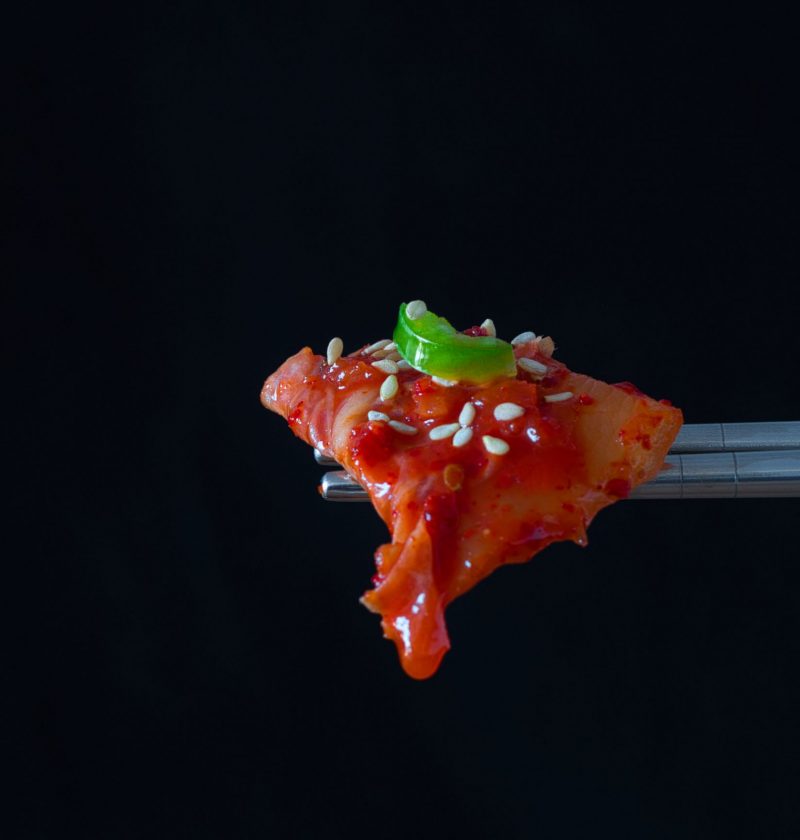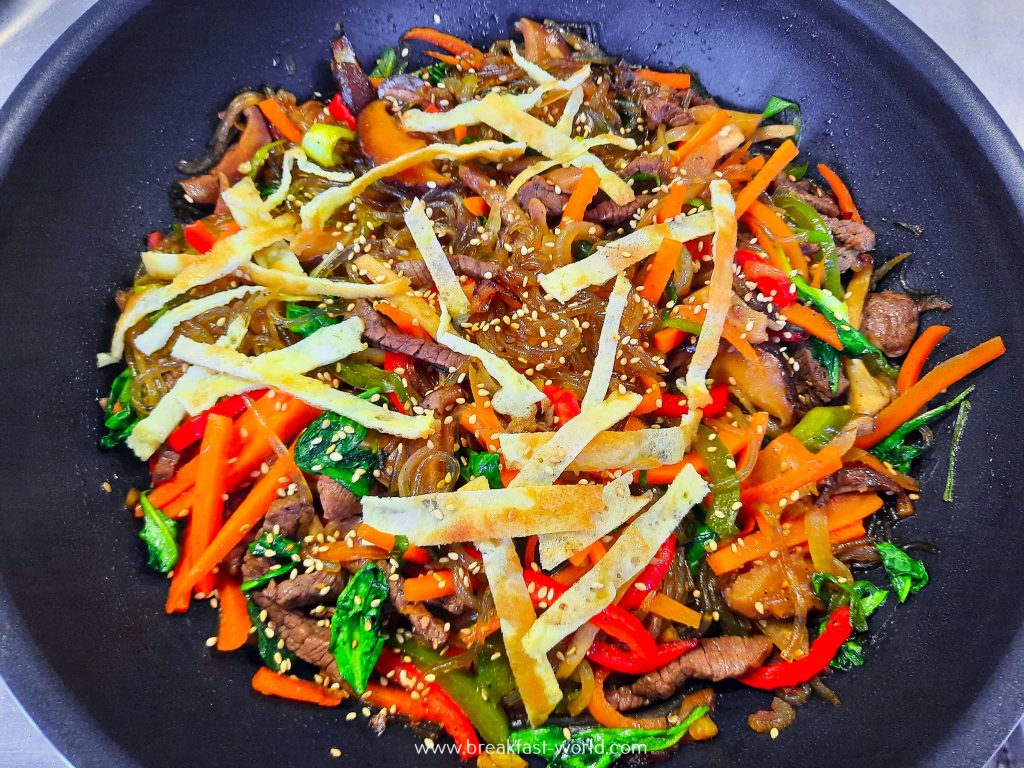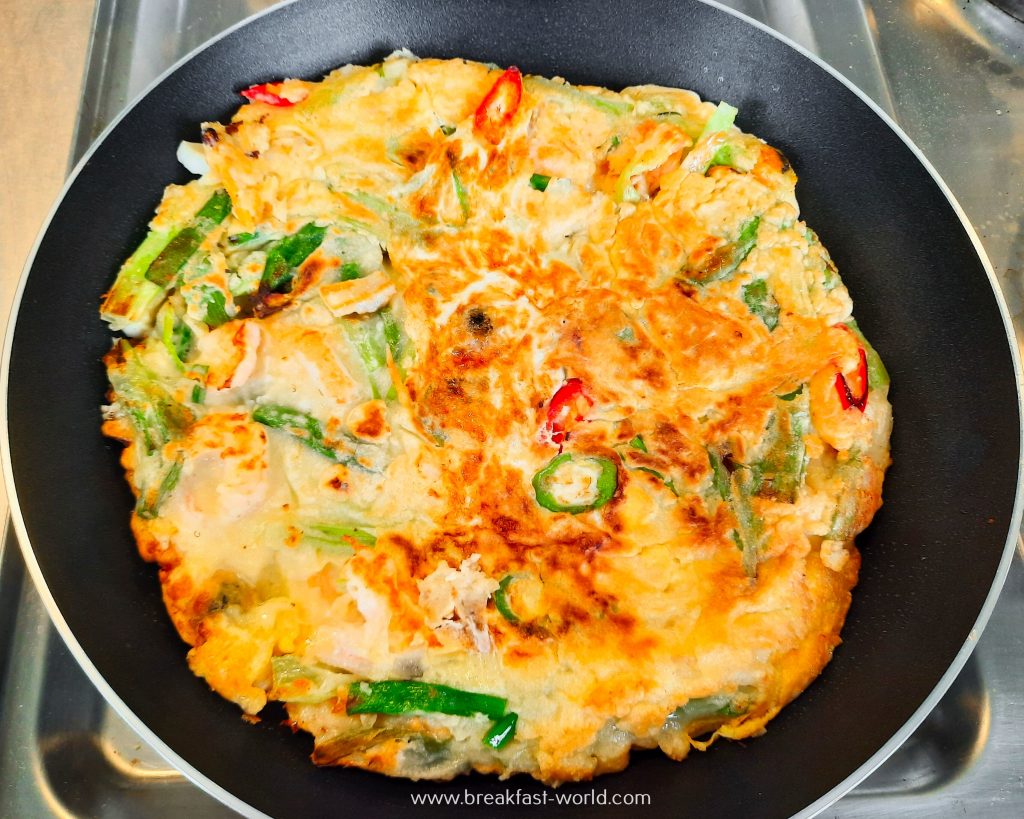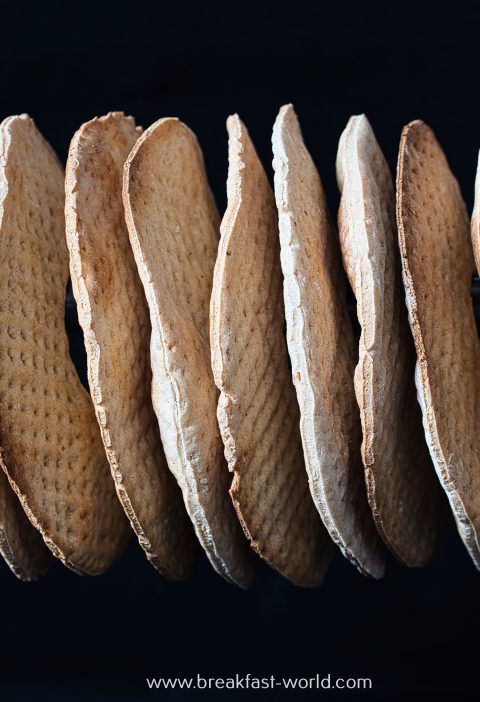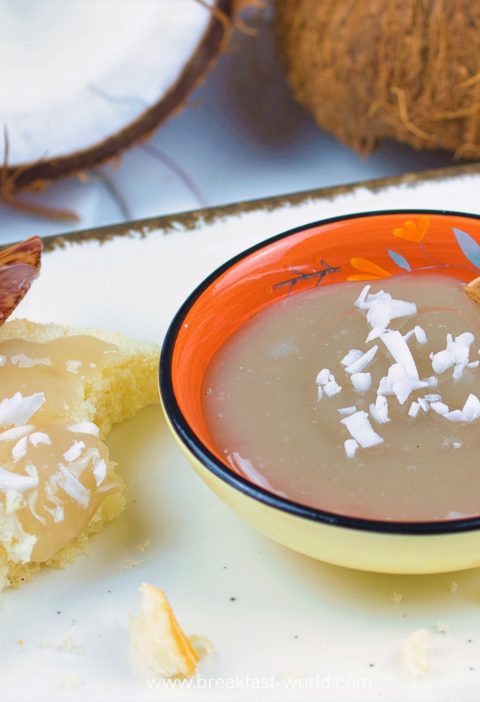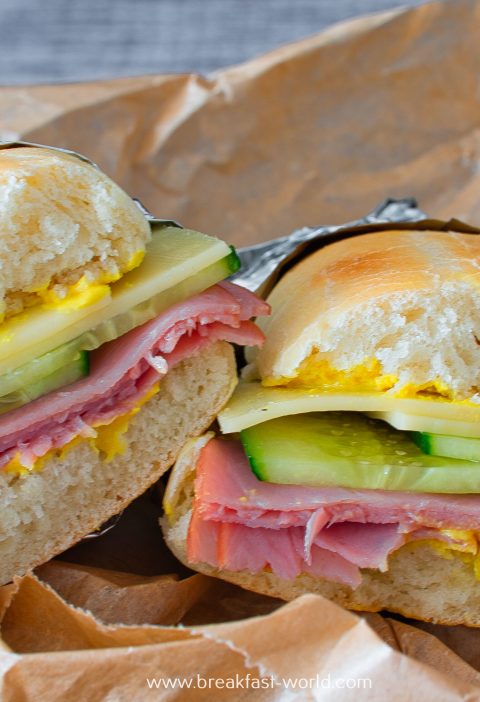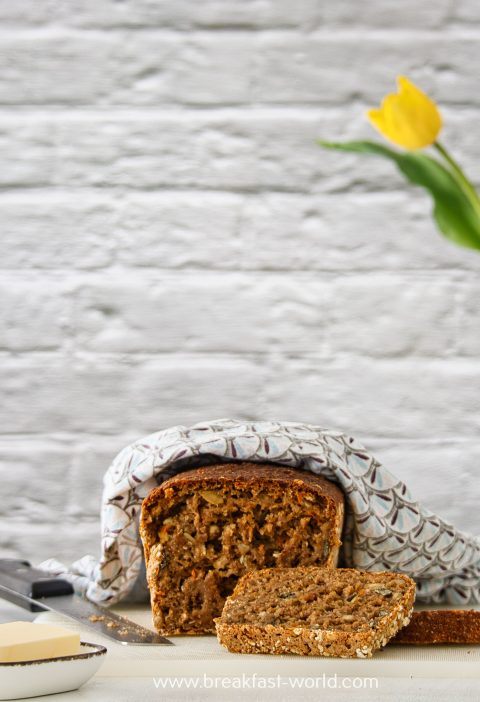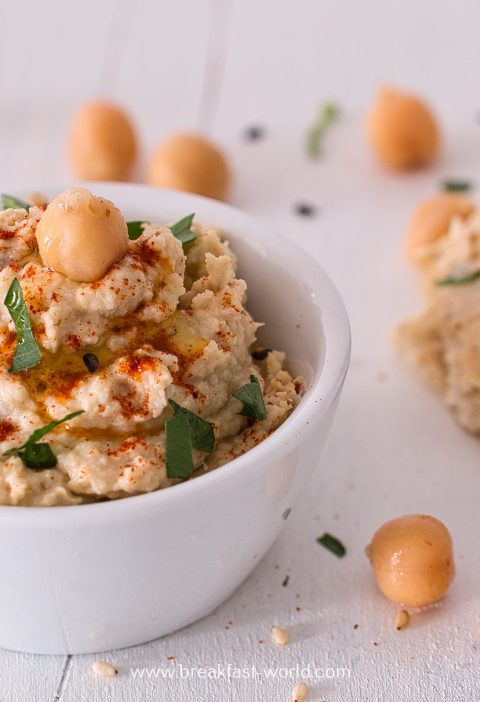Kimchi is considered one of the healthiest foods in the world thanks to its valuable nutrients. This pickled vegetable not only boosts metabolism and digestion but also activates the immune system.
Before I tell you more about Kimchi and share a simple recipe for making it yourself, here are some general information about Korean cuisine and breakfast habits in Korea.
Jump to RecipeKorean cuisine
The staple food in Korean cuisine, like in many other Asian cuisines, is rice. Fresh vegetables, meat (usually beef), or tofu are often on the menu. Pickled vegetables (Banchan) and, of course, Kimchi are part of almost every meal. Beware, due to the generous use of chili paste (Gochujang), some dishes can be quite spicy!
A very popular dish is Bibimbap: Rice is topped with various vegetables, fried meat, and a fried egg. Before eating, you mix the ingredients - depending on your taste - with more or less chili paste using chopsticks. Hence the name: Bibimbap in Korean means something like "mixed rice."
Another well-known and very flavorful dish is Chapchae: In this delicious noodle dish, glass noodles are stir-fried with various mushrooms, vegetables, and meat or tofu. The dish is then seasoned with soy sauce and spices.
A typical street food dish is Haemul-Pajeon: The Korean name Pajeon consists of Pa, which means spring onion in Korean, and Jeon, the term for savory pancakes. In the popular variant Haemul, fresh seafood (Haemul) is added to the batter, hence the name: Haemul Pajeon. It is a popular snack or appetizer during festivals.
Tteok are a type of cake made from glutinous rice flour, shaped into narrow cylinders approximately 4 cm long. When mixed with Gochujang (the spicy chili paste), sometimes also with fish cakes, Chinese cabbage, and spring onions, you get the so-called Tteokbokki, a typical fast food dish in Korea.
Grilled dishes are also very popular in Korea. In Korean barbecue (Gogigui), marinated meat such as beef or pork belly is grilled directly on a built-in grill on the table. The most famous form of Gogigui is Bulgogi: beef is marinated in soy sauce, sugar, spring onions, and spices, cut into bite-sized pieces, and then grilled. Afterwards, the meat pieces are placed on a lettuce leaf and rolled before consumption with soy sauce, chili paste, Kimchi, or other ingredients. However, Bulgogi also tastes great simply with rice.
Breakfast
The Korean breakfast varies depending on individual preferences and lifestyle. In urban areas, the lifestyle has often embraced more Western eating habits. However, there are still traditional Korean breakfast options that remain popular:
Juk is rice porridge. Its flavor comes from additional ingredients such as vegetables, meat, mushrooms, or egg. Juk is easily digestible and nutritious. By the way, you can find a recipe for rice porridge in my article about breakfast in Hong Kong, specifically here.
Similar to sushi but without raw fish, is Gimbap a popular choice for a quick breakfast on the go. The roll, wrapped in dried seaweed, is filled with rice, vegetables, egg, and meat.
Many Koreans already eat Kimchifor breakfast, often combined with rice. It is usually served with soup, omelet, or fried fish.
Kimchi
Kimchi is probably the most famous Korean dish.
In Korea, this red, tang fermented vegetable is served with almost every meal: as a soup or as a side dish to fish, meat, or tofu.
This traditional "superfood" consists of Napa cabbage, which is fermented with a spicy seasoning paste made from salt, garlic, ginger, green onions, fish sauce, and chili powder. The exact recipe can vary depending on the region and personal preferences. My kimchi recipe also includes Asian pear for a slightly sweet aroma and glutinous rice flour for better binding of the paste.
The Napa cabbage, cut into bite-sized pieces, is soaked in the seasoning paste made from the above ingredients and then fermented. During fermentation, natural bacteria produce lactic acid, which not only creates the unique flavor of kimchi but also acts as a preservative.
Kimchi is not only delicious but also rich in probiotic bacteria, vitamins, and fiber, making it very healthy. Additionally, kimchi is low in calories.
Many Korean households make kimchi in large quantities. In Korea, there are even special kimchi refrigerators for optimal and odor-neutral storage.
Making kimchi yourself is easier than you might think. Although the process requires some time, the result is definitely worth the effort!
Here is my standard recipe for Kimchi:
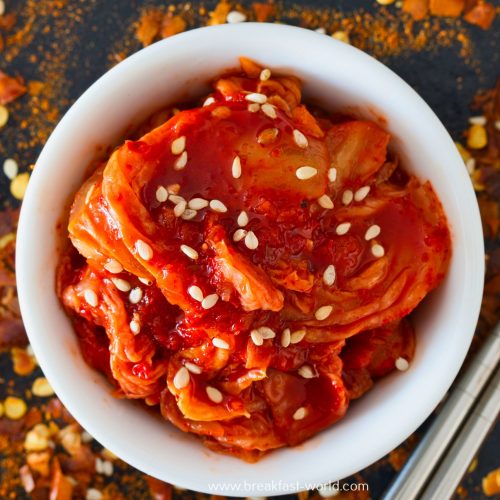
Kimchi
Zutaten
- 1 Napa cabbage
- 10 tbsp. Salt without additives
For the paste
- 6 garlic cloves
- 4 cm ginger
- 1 Asian Pear
- 1 tbsp. Glutinous rice flour
- 200 ml water
- 3 green onions
- 2 tbsp. Korean chili powder
- 1 tbsp. Korean chili flakes
- 2 tbsp. Fish sauce
Anleitungen
- Cut Napa cabbage in half lengthwise and then into bite-sized pieces.
- Generously sprinkle vegetables with salt and let sit for at least 2 hours.
- Then rinse the vegetables thoroughly and drain well.
- Peel the garlic cloves, ginger and nashi pear and cut into coarse pieces.
- Cut the spring onions into thin strips approx. 3 cm long.
- Mix glutinous rice flour with water and bring to the boil, stirring constantly, until the liquid becomes glassy. Then continue to simmer for a moment over low heat. Let cool down.
- Mix the ginger, garlic, nashi pear with the cooled rice porridge and then puree it finely with a hand blender. Mix in the chili powder and fish sauce.
- Mix the Chinese cabbage and spring onions well with the seasoning paste. If necessary, season with a little fish sauce.
- Pour vegetables into the prepared jars. Make sure to press the vegetables in as firmly as possible so that air escapes and prevents mold from forming. Leave approx. 2 cm of space at the top edge.
- Place the marinated vegetables in a glass or plastic container and press gently to remove air bubbles.
- Seal the container and let it ferment at room temperature for about 2-4 days.
- Then store the kimchi in the refrigerator until ready to eat.
- The kimchi can be consumed after about 7 days. It gets even tastier over time.
Notizen
If you like this post, I look forward to a rating (star bar) or a nice comment!
Thanks a lot!
Perhaps you would also like to subscribe to my page. If so you will be regularly informed about new posts.

